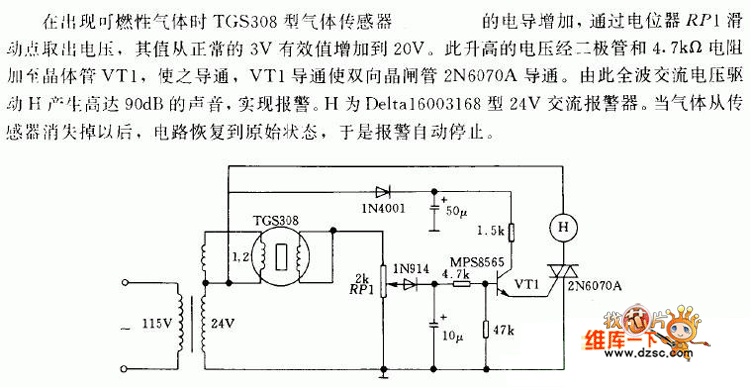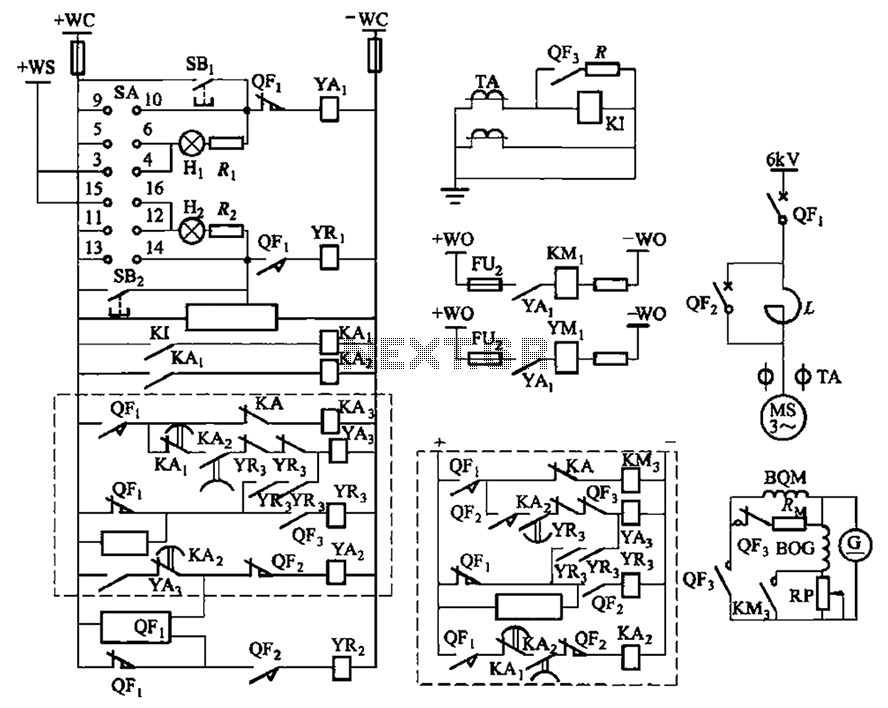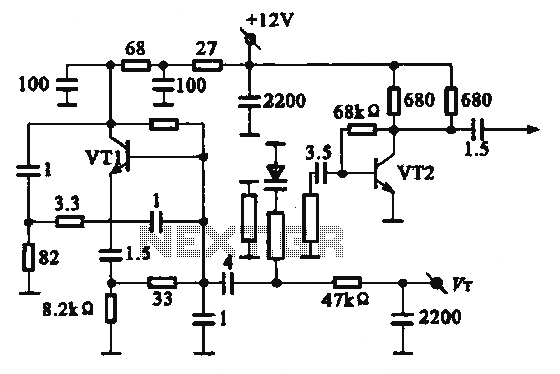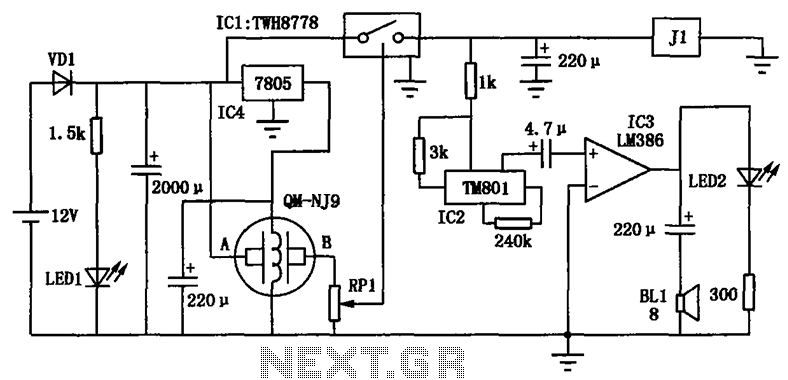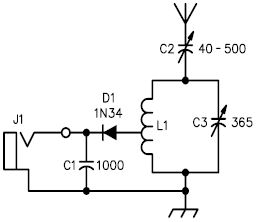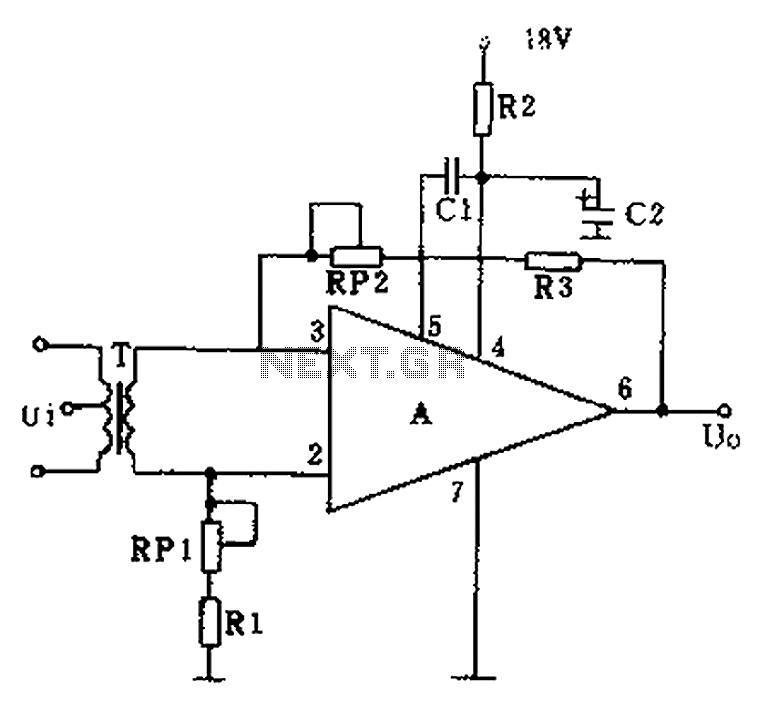
TDA4866 test circuit diagram
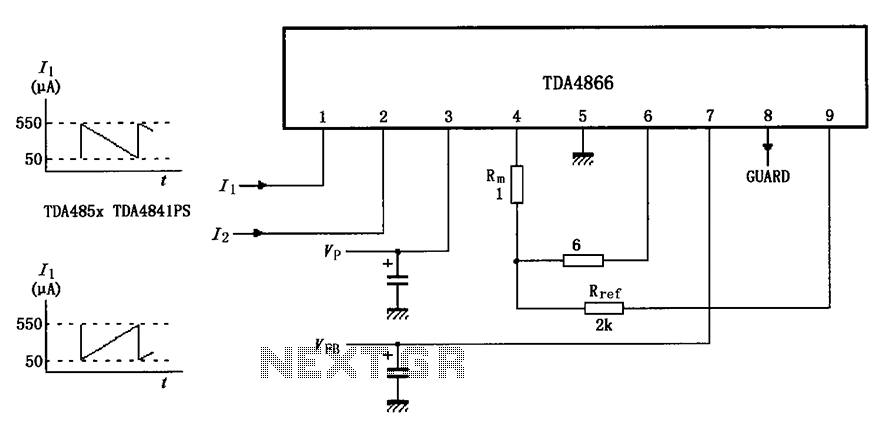
The TDA4866 test circuit operates with a positive supply voltage (VP) and a feedback voltage (VFB) in conjunction with a flyback circuit. The circuit responds to changes in the input signal, transitioning from one state to another. The input stage features a differential configuration with an inverting input terminal. The output stage generates a vertical sawtooth voltage, which is amplified before being output at specified points. A dummy load resistance simulates a deflection coil, while the output signal is fed back through a reference resistor (Rref). The circuit specifications include VFB at 40V, a maximum of 60V, a feedback resistor (RFB) of 100 ohms, a feedback capacitor (CFB) of 22 microfarads, a capacitor (CSP) ranging from 10 to 330 nanofarads, and a series resistor (RSP) between 10 and 22 ohms.
The TDA4866 test circuit is designed to evaluate the performance of the TDA4866 integrated circuit, which is commonly used in vertical deflection applications in television and display systems. The circuit's operation is initiated by the application of a positive supply voltage (VP), which powers the internal components and facilitates the generation of the necessary waveforms for vertical deflection.
The feedback voltage (VFB) is critical for maintaining the stability and accuracy of the output waveform. In this configuration, the circuit is capable of handling a feedback voltage of 40V, with a maximum allowable voltage of 60V, ensuring that the circuit operates within safe limits under various load conditions. The reference resistor (Rref) plays a pivotal role in determining the feedback loop gain, which influences the overall performance of the circuit.
The differential input stage is designed to receive input signals that represent the desired vertical deflection. The inverting input terminal processes these signals, allowing for the generation of a vertical sawtooth waveform. This waveform is essential for driving the vertical deflection coils in a display system, providing the necessary movement of the electron beam or image pixels.
The output stage amplifies the sawtooth voltage, ensuring that it reaches the appropriate levels required for effective deflection. The use of a dummy load resistance simulates the behavior of a deflection coil, allowing for accurate testing and evaluation of the circuit's performance under realistic conditions.
Capacitors and resistors are selected based on the desired frequency response and stability of the circuit. The feedback capacitor (CFB) of 22 microfarads is chosen to filter out high-frequency noise, while the capacitor (CSP) can vary between 10 and 330 nanofarads, allowing for tuning of the circuit's response. The series resistor (RSP), ranging from 10 to 22 ohms, is used to limit current and protect the circuit from potential overload conditions.
Overall, the TDA4866 test circuit is a comprehensive setup for evaluating the functionality and performance of the TDA4866 integrated circuit in vertical deflection applications, providing essential insights into its operation and characteristics. As shown for the TDA4866 test circuit. When the positive supply voltage VP, supply voltage VFB plus flyback circuit operates when the input signal changes from 1 foot and 2 fee t inside the differential input stage input to the inverting input terminal and inverting input terminal, vertical sawtooth voltage output stage to enlarge after the output of 6 feet and 4 feet. The test circuit used as a dummy load resistance 6 alternative deflection coil, while the output signal is fed back through Rref 9 feet.
40V VFB 60V, RFB 100, CFB 22 F, CSP 10 ~ 330nF, RSP 10 ~ 22 .
The TDA4866 test circuit is designed to evaluate the performance of the TDA4866 integrated circuit, which is commonly used in vertical deflection applications in television and display systems. The circuit's operation is initiated by the application of a positive supply voltage (VP), which powers the internal components and facilitates the generation of the necessary waveforms for vertical deflection.
The feedback voltage (VFB) is critical for maintaining the stability and accuracy of the output waveform. In this configuration, the circuit is capable of handling a feedback voltage of 40V, with a maximum allowable voltage of 60V, ensuring that the circuit operates within safe limits under various load conditions. The reference resistor (Rref) plays a pivotal role in determining the feedback loop gain, which influences the overall performance of the circuit.
The differential input stage is designed to receive input signals that represent the desired vertical deflection. The inverting input terminal processes these signals, allowing for the generation of a vertical sawtooth waveform. This waveform is essential for driving the vertical deflection coils in a display system, providing the necessary movement of the electron beam or image pixels.
The output stage amplifies the sawtooth voltage, ensuring that it reaches the appropriate levels required for effective deflection. The use of a dummy load resistance simulates the behavior of a deflection coil, allowing for accurate testing and evaluation of the circuit's performance under realistic conditions.
Capacitors and resistors are selected based on the desired frequency response and stability of the circuit. The feedback capacitor (CFB) of 22 microfarads is chosen to filter out high-frequency noise, while the capacitor (CSP) can vary between 10 and 330 nanofarads, allowing for tuning of the circuit's response. The series resistor (RSP), ranging from 10 to 22 ohms, is used to limit current and protect the circuit from potential overload conditions.
Overall, the TDA4866 test circuit is a comprehensive setup for evaluating the functionality and performance of the TDA4866 integrated circuit in vertical deflection applications, providing essential insights into its operation and characteristics. As shown for the TDA4866 test circuit. When the positive supply voltage VP, supply voltage VFB plus flyback circuit operates when the input signal changes from 1 foot and 2 fee t inside the differential input stage input to the inverting input terminal and inverting input terminal, vertical sawtooth voltage output stage to enlarge after the output of 6 feet and 4 feet. The test circuit used as a dummy load resistance 6 alternative deflection coil, while the output signal is fed back through Rref 9 feet.
40V VFB 60V, RFB 100, CFB 22 F, CSP 10 ~ 330nF, RSP 10 ~ 22 .
Warning: include(partials/cookie-banner.php): Failed to open stream: Permission denied in /var/www/html/nextgr/view-circuit.php on line 713
Warning: include(): Failed opening 'partials/cookie-banner.php' for inclusion (include_path='.:/usr/share/php') in /var/www/html/nextgr/view-circuit.php on line 713
